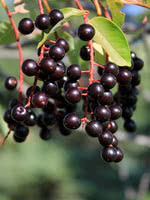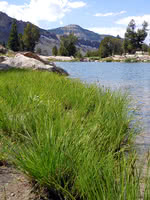Mon-Fri 9am - 5pm Mountain time
Western Chokecherry vs Water Sedge
Prunus virginiana var. demissa
Carex aquatilis
CUSTOM GROW
Western Chokecherry is a shrub or small tree commonly used for farmstead and field windbreaks.
It produces white flowers in the spring and edible dark purple fruit that matures between September and October. Its cherries are great for making for making jams, jellies or wine, but are not very palatable for raw eating.
Water Sedge is a waterside grass which grows an extensive horizontal root system. This prevents erosion and allows it to grow back after being eaten.
Water sedge is grazed by many animals including cattle, sheep, horses and waterfowl. Animals choose Water Sedge for forage later in the year as it stays green longer than other plants, requiring you to buy feed for less of the year.
Western Chokecherry Quick Facts
Water Sedge Quick Facts
Toxicity: toxic to horses, cattle, etc.)

